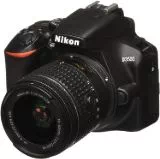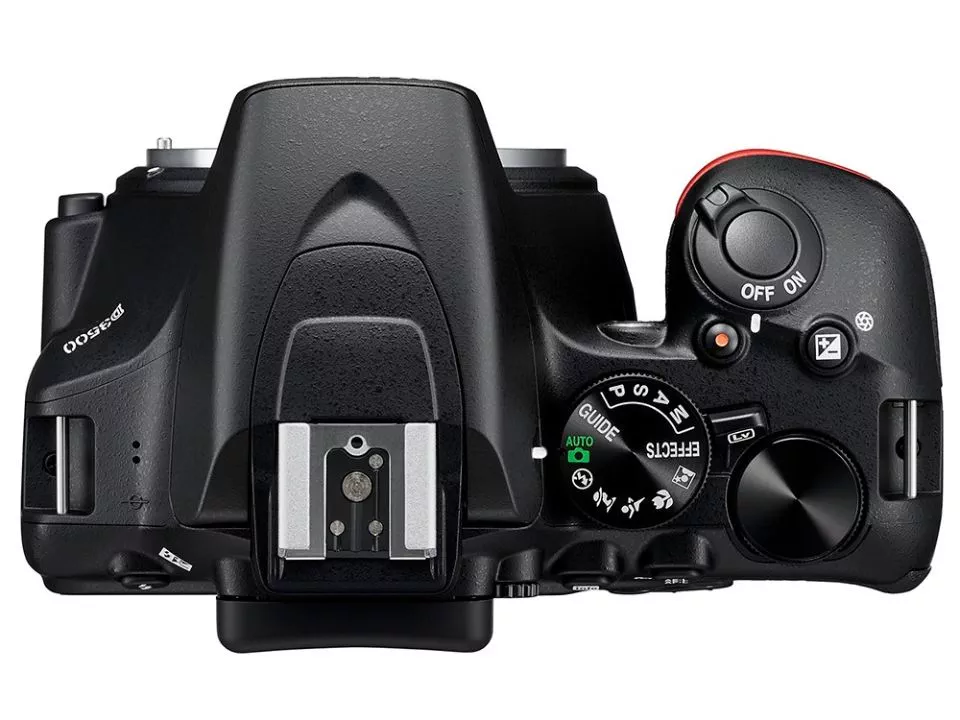Nikon Z6 Review
After much anticipation from Nikon users, the...
By Susan Giles1503

0

Photographers are only as good as the cameras they use, allowing them to capture some of the best shots ever. The Nikon D3500 is making excellent headway amongst photographers, especially with beginners that are just starting their photography journey. Whether you’re a student, a professional, a fan, or you casually like the hobby, this camera seems like an attractive choice.
The market has several digital single-lens reflex cameras to choose from. Each one has its advantages and disadvantages. Let’s dive in deep and learn more about the Nikon D3500 camera to see if it’s a choice that is worth buying.
The Nikon D3500 is a DSLR with a Nikon F lens mount, having a 24.2MP DX-Format APS-C CMOS 4 Sensor, 23.5 x 15.6mm. The size is of the body is 124 x 97 x 69.5mm, and the camera is very light, weighing around 415 grams.
It has an 18-55mm f/3.5-5.6G VR AF-P DX NIKKOR zoom lens, 2 professional telephoto lens, and an HD wide-angle lens. The product comes with a universal cap keeper and a hard tulip-shaped hood for all lenses.
I love the extra items that come with the camera, including the sturdy and adjustable tripod and the flexible 50-inch photo/video tripod. It also has a multi-coated UV filter and a multi-coated 3-piece filter kit. You won’t have to worry too much about the screen because you’ll have several ultra-clear screen protectors.
The digital slave flash comes with a bracket, and it’s easy to assemble and attach. Every kit has a 6-piece SD/SDHC memory card with a hard-plastic case, a USB 2.0 memory card reader, and a 64GB SDHC class-10 flash memory card.
All of these items in the kit can be stored safely in the deluxe-padded SLR camera gadget bag. It’s very spacious and durable for all types of adventures when you’re out capturing some nice photos.
This camera is designed to be compact, durable, and easy-to-use. Even though it’s a good choice for professional photographers, it’s designed to be an excellent entry-level camera because of its beginner friendliness traits. The Nikon D3500 is intuitive, flexible, and highly responsive with the auto-focus design. The sensor is designed to work in different conditions, having suitable settings that work in a variety of lighting because of the native sensitivity range.
The shooting rate is a continuous 5 fps speed, and it has full HD video recording at 60 fps speed. The appealing thing about the sensor is that it gives you excellent resolution and sharpness for photos and videos because of the optical low-pass filter design.
The lens has a vibration reduction system, making shots look sharp with minimal blurriness. I thought this was a great addition because the camera doesn’t have an in-body stabilization mechanism in its design. Some kits can be cheaper with the vibration reduction system, but I believe a little extra money spent will be worth it to get the high-quality ones. Even though it has a decent lens for capturing video, it isn’t designed for providing 4k quality. It can only give you 1920x1080 video at full HD and up to 60 fps.
Other alternatives have Wi-Fi compatibility, but the Nikon D3500 doesn’t, and I think it’s one of its drawbacks with the design. However, you can still use the built-in Bluetooth to help you transfer photos or videos to your phone and laptop.
A nice perk I noticed with this camera model is that you can connect it with your smartphone and remotely control the camera’s shutter. The viewfinder isn’t designed to show you all exposure/color information, lacking what you can get from a mirrorless camera or one with an electronic viewfinder.

The Nikon D3500 is a sturdy, chunky, and light as a feather black camera with a nice and decent grip. Most alternatives have a bothersome button layout that makes you press something accidentally, but this camera’s buttons are placed conveniently in spots away from your grip when you take pictures. Even though it’s sturdy, the camera is not waterproof or weather-sealed. I have to be a little careful when it starts raining or if it’s too humid outside.
The good news is that the rear screen isn’t touch-sensitive because it has physical dials and buttons, preventing you from accidentally changing something while taking your shots. The quality of the display is quite excellent if you ask me, having clear and bright colors, neatly displayed information, detail sharpness, and a graphical representation of the shutter speed.
The body feels solid and comfortable on your hands. It has a single control dial that feels good and not too loose or tightened. The camera’s function changes depending on the mode you choose, and it looks quite wide and long once you assembled the AF-P kit lens.
The retracting mechanism felt good too, and I didn’t feel like the retracting feature is too tightened or loose, giving you complete control to get the precise spot you want. The viewfinder has a natural and lag-free look, making it an appealing feature in this camera.
The power switch is placed conveniently around the shutter release button, making it easy whenever you want to turn the camera on or off. Every button is within reach of your index finger and right thumb, allowing you to easily navigate between the power button, control dial, and main mode dial.
It has a pentamirror design and not a pentaprism that you find on other cameras, making it an affordable choice. You still get a bright and clear look without shifting your eyes when you look into the corners of the frame.
You can rest assured that this camera is quite responsive, but I find the warning to use the retracting mechanism quite bothersome. It has a nice auto-focus mechanism, but the beep sound is a bit loud. The good news is that the AF-P lens is noiseless when it auto-focuses. I like how the camera can automatically choose the correct focus point by itself, but it does have a manual option as well.
The live view auto-focuses automatically, and it’s very fast, but the lack of a touch control makes navigating between the four-way buttons a bit slow. The camera’s design doesn’t have an on-sensor phase-detection mechanism for the auto-focus, making the contrast-based auto-focus the only option.
However, that option feels slow compared to other alternatives, but the Nikon D3500 makes up for that with the live view AF’s responsive levels. It feels as if it might even rival the mirrorless cameras with that feature.
When I used the standard picture control, I noticed that it can capture high levels of depth and richness of colors. The 18-55mm kit zoom was performing very well for me too, allowing you to have control over the perspective of the image you’re taking. The camera holds on to the subtle details in every shot, whether you capture autumn colors, dense shadowy areas, or the bright blue sky.
For an affordable entry-level camera model, I enjoyed how quick and responsive it is. I believe that this DSLR model can rival some of the best alternatives in the market because it’s great for beginners and professionals too. The Nikon D3500 is getting cheaper every quarter as well, making it an appealing choice for a lot of photography lovers.
I’d give this camera a solid 10/10 because even with what it’s lacking, I firmly believe that it will give you great results, and it’s an excellent value for money choice.
Updated 4 years ago